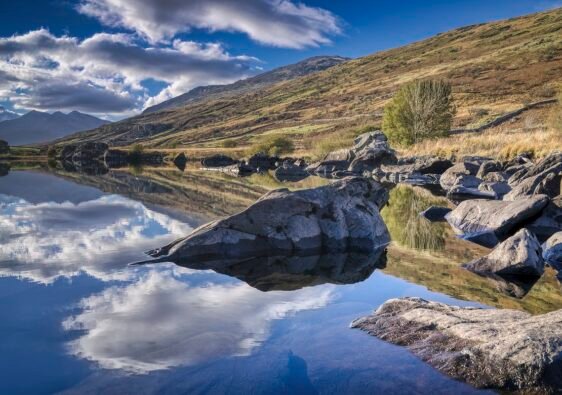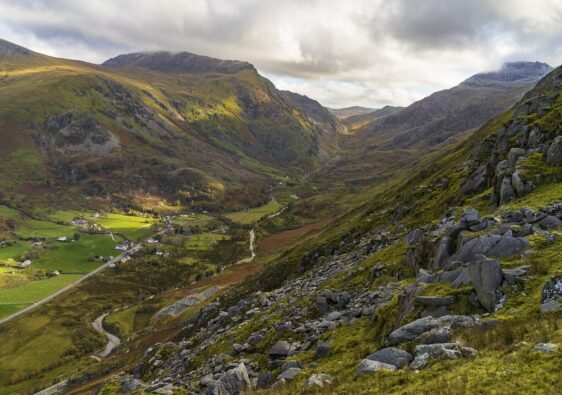Stretching for 870 miles along the captivating coastline of Wales, the Wales Coast Path offers a remarkable journey that combines stunning natural beauty, rich heritage, and cultural history. Officially opened in May 2012, the Wales Coast Path is one of the few trails in the world that follows an entire country’s coastline, making it a unique attraction for locals and tourists alike. From towering cliffs and sandy beaches to quaint villages and historic castles, this path provides an immersive experience in Welsh landscapes and lifestyles.
Path Overview and Highlights
The Wales Coast Path spans the entire coastline of Wales, from the Dee Estuary in the north to Chepstow in the south. The path is divided into eight distinct regions, each with its own unique landscapes and features. These regions offer varied terrain and experiences, from family-friendly walks to challenging hikes for seasoned adventurers.
- North Wales Coast and Dee Estuary: Known for sandy beaches and historic resorts, this section features the Victorian charm of Llandudno and the castle of Conwy, a UNESCO World Heritage Site.
- Isle of Anglesey: As an Area of Outstanding Natural Beauty, Anglesey offers scenic coastal cliffs, nature reserves, and a rich historical legacy with Neolithic monuments and medieval castles.
- Llyn Peninsula: This peninsula is celebrated for its rugged landscapes, hidden coves, and cultural significance, where you’ll find Welsh language and customs thriving in small fishing villages.
- Snowdonia and Ceredigion Coast: Passing the foothills of Snowdonia, this area has dramatic cliffs, coastal flora and fauna, and tranquil beaches perfect for spotting dolphins.
- Pembrokeshire Coast National Park: A haven for nature enthusiasts, Pembrokeshire is known for its stunning beaches, medieval castles, and vibrant seaside towns like Tenby.
- Carmarthenshire: Home to rolling hills and sandy shores, this region offers a mix of history and natural beauty, with sites like Laugharne, where poet Dylan Thomas lived.
- Gower Peninsula and Swansea Bay: Britain’s first Area of Outstanding Natural Beauty, Gower is famous for limestone cliffs, wild beaches, and ancient woodlands.
- South Wales Coast and Severn Estuary: This section blends natural beauty with industrial heritage, featuring the Glamorgan Heritage Coast, Cardiff Bay, and the historic town of Chepstow.
Walking the Path: What to Expect
The Wales Coast Path is designed to be accessible to all, whether for short strolls or long-distance hiking. Each region offers options for various skill levels, with well-marked paths and facilities for visitors along the way. Walking the entire path typically takes about 2 to 3 months, though most visitors prefer to explore individual sections over a few days. The terrain ranges from flat, easy coastal stretches to steep, challenging cliffs, so it’s essential to check each section’s difficulty level and plan accordingly.
Wildlife and Nature Conservation
Wales’ coastline is renowned for its biodiversity, with the path passing through several protected areas and nature reserves. Walkers can spot grey seals, dolphins, and a variety of seabirds along the journey. The coast also features unique plant life, particularly on the rocky cliffs and sandy dunes, with conservation efforts actively maintaining the natural habitats.
Historical and Cultural Significance
The path is steeped in history, reflecting Wales’ past through ancient castles, churches, and remnants of coastal industries. In places like Conwy and Harlech, visitors can explore medieval castles that once protected the Welsh coast. Historic fishing villages and old quarrying sites remind travelers of the coast’s industrial heritage, while sites like St. Davids, the smallest city in the UK, celebrate Wales’ spiritual history.
Practical Tips for Visitors
- Best Time to Visit: The most popular time to walk the path is from late spring to early autumn, when the weather is mild and the days are longer. However, winter walks offer a quieter experience and breathtaking, rugged landscapes.
- Accommodation: Options range from cozy B&Bs and coastal campsites to luxury hotels. Several local businesses cater specifically to walkers, offering luggage transport and other amenities.
- Safety Tips: Weather along the Welsh coast can change quickly, so it’s advisable to check forecasts, dress in layers, and carry waterproof gear. High tides can also affect parts of the path, so be mindful of tide times, especially on sandy beaches and near estuaries.
Preserving the Coastline: Sustainability and Community Involvement
The Wales Coast Path promotes sustainability, aiming to protect the environment and benefit local communities. Many regions have community initiatives that encourage responsible tourism, including litter-picking events and conservation projects. Walkers are encouraged to respect local wildlife, follow marked paths, and support local businesses along their journey.



